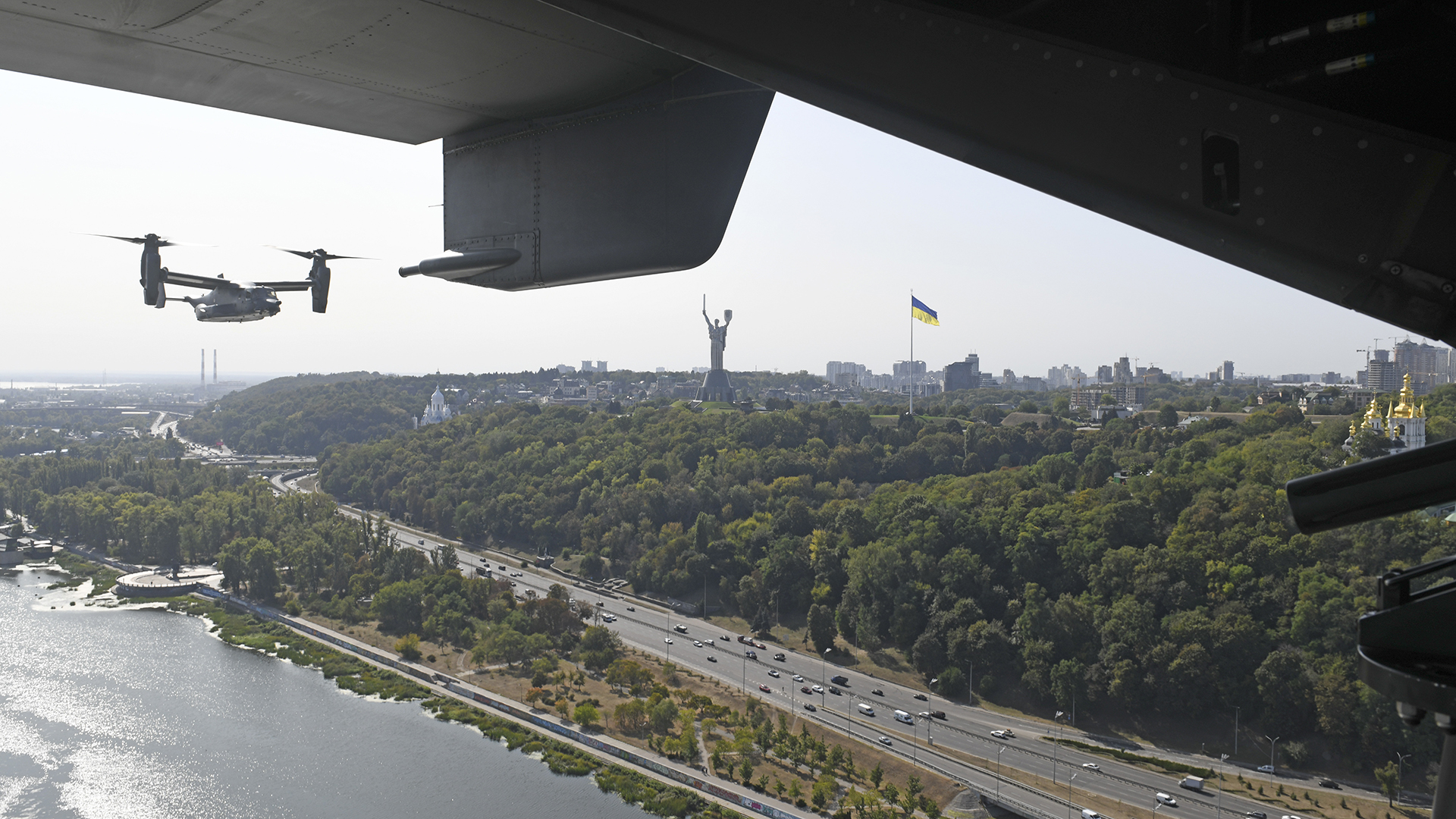

U.S. service members deployed to Ukraine can now receive imminent danger pay and hardship duty pay, a defense official has confirmed.
Gier Martin, who is performing the duties of the assistant secretary of defense for manpower and reserve affairs, announced the change in a July 13 memo that was posted on the unofficial Air Force amn/nco/snco Facebook page.
U.S. troops in Ukraine can receive up to $225 per month in imminent danger pay and another $100 per month in hardship duty pay-location for a total of $325 per month, according to the memo, as first reported by Military Times.
The only U.S. service members deployed to Ukraine are assigned to the embassy in Kyiv, a defense official told Task & Purpose on Monday.
Subscribe to Task & Purpose Today. Get the latest military news and culture in your inbox daily.
U.S. service members are eligible for Imminent Danger Pay if they are in designated areas where they face the threat of physical harm from hostile fire, explosions, civilian insurrection, civil war, or terrorism, the official said.
“The Department has designated Ukraine an Imminent Danger Pay (IDP) area effective April 24, 2022,” the defense official said.
It is unclear exactly how many U.S. troops are currently deployed to Ukraine. The Defense Manpower Data Center’s most recent report on how many service members are assigned overseas was released in March, and it does not include any numbers for active-duty or reserve component soldiers. The report only lists one sailor, two marines, and one member with the Department of the Air Force deployed to Ukraine.
One of the classified documents allegedly leaked by Airman 1st Class Jack Douglas Teixeira, showed that 14 members of U.S. Special Forces had been deployed to Ukraine as of February, but defense officials have stressed that they do not conduct combat missions.
“For operational security and force protection reasons, we won’t discuss specific details regarding U.S. personnel assigned to the US Embassy in Kyiv,” Marine Lt. Col. Garron Garn, a Pentagon spokesman, said on Monday. “As previously shared; however, DoD maintains a limited footprint inside of Ukraine for mission critical functions at the Embassy, including providing embassy security support at the request of the U.S Department of State, in coordination with the U.S. Department of State’s Diplomatic Security Service (DSS). This is not unique to Ukraine; DoD personnel provide Embassy security services all over the world.”
No information was available on Monday about why the Defense Department waited nearly 18 months after Russia’s invasion of Ukraine to announce that U.S. troops deployed to the country were eligible for the special pay.
The move could be related to President Joe Biden’s July 13 executive order designating Operation Atlantic Resolve as a contingency operation, said Katherine Kuzminski, director of the military, veterans, and society program at the Center for a New American Security think tank in Washington, D.C.
“I think, for the legal classifications of money within DoD [the Defense Department], it took declaring it a contingency to open that pot of money,” Kuzminski told Task & Purpose on Monday.
When Army Lt. Gen. Douglas A. Sims II, director of operations for the Joint Staff, announced Biden’s executive order, he said the new designation for Operation Atlantic Resolve, “Benefits troops and families with increases in authorities, entitlements and access to reserve component forces and personnel.”
Biden’s executive order also authorized the Defense Department to mobilize up to 450 members of the Individual Ready Reserve and up to 3,000 troops from the Select Reserve if needed for operations in Europe. No specific units have been identified or tasked to deploy to Europe per the president’s executive order.
“It doesn’t mean, for example, that 3,000 reservists will be called up, or 450 IRR [Individual Ready Reserve members] will be called up,” Air Force Brig. Gen. Pat Ryder, a Pentagon spokesman,previously told Task & Purpose. “It just means those are the parameters which DoD can use.”
The latest on Task & Purpose
- Air Force shows off its Rapid Dragon cruise missile system on China’s doorstep
- The Pentagon didn’t refuse to pay $60,000 to fly fallen Marine Nicole Gee to Arlington [Updated]
- Bowe Bergdahl’s court-martial is overturned
- Everything we know about the U.S. Army soldier in North Korea
- Parris Island drill instructor found not guilty of Marine’s death during Crucible